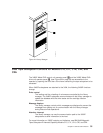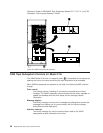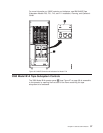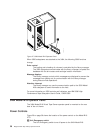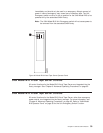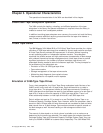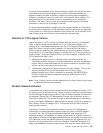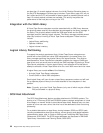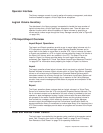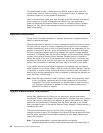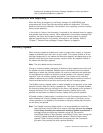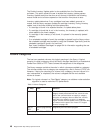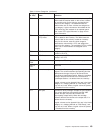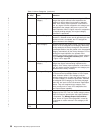the virtual volume selected by the library manager to satisfy the request. No recall
of the data from the previous usage of the volume is performed because the
fragment contains the label information needed by the host tape management
software to validate the use of the volume for a non-specific mount request. The
subsystem signals the host that the mount is complete when the fragment is
accessed. The result is a very short mount response time because no physical
movement or mounting of a cartridge is involved.
If a mount request specifies a category that has not been defined as “Fast Ready”,
the library has no indication that the application intends to write from the beginning
of the volume. It is likely that the selected virtual volume will not be resident in the
tape volume cache and will have to be recalled from physical tape.
Deletion of VTS Logical Volume
Logical volumes in a VTS can only be deleted under the control of the attached
hosts. A logical volume can be deleted only if it is in the Insert category or a
category with a Fast-Ready attribute set (see “Set VTS Category Attributes” on
page 166). When a logical volume is deleted, it is removed from the library’s
inventory and any data that was associated with the volume is deleted. A logical
volume which is in a Fast-Ready category is deleted from a VTS by performing the
following steps. (A logical volume which is in the Insert category is deleted from a
VTS by performing step 2 only).
1. Assigning the logical volume to a category within the library that has the
Fast-Ready attribute assigned. This is accomplished by the tape management
system when the data associated with the volume reaches its expiration date
and the volume is returned to the scratch pool.
2. Subsequently, assigning the logical volume to an eject category. This can be
done by asking that the volume be ejected from the library, using
platform-specific library control interfaces; for example, with MVSE/ESA or
OS/390, through the tape management interfaces, ISMF panels or MVS
operator commands.
Note: Once a logical volume has been deleted from the library, data on the volume
is deleted and cannot be recovered.
Scratch Stacked Volumes
It is essential that sufficient scratch stacked volumes be available for use by a VTS
for copying a virtual volume when the volume is closed. A warning is provided when
the Free Storage Threshold cannot be met with the scratch stacked volumes which
are available. See the Set VTS Management Policies Pop-Up Window, shown in
Figure 99 on page 169. The number of empty scratch volumes can be determined
by using the Search Database for Volumes pop-up window, Figure 83 on page 140,
with a Search Criteria of category FF03. The records found will be the count of
empty scratch volumes.
The Reclaim Threshold Percentage as entered on the Set VTS Management
Policies pop-up window becomes important when the supply of scratch stacked
volumes is low. The VTS Space Reclamation Algorithm may impact the VTS
performance when it is necessary to reclaim expired space on stacked volumes. A
high Reclaim Threshold Percentage requires that more active data be moved (using
VTS resources) to free the stacked volume for scratch use. As a general rule, you
should try not to go above 30% to 40% as a Reclaim Threshold Percentage. It is
better to add additional stacked volumes rather than raise this value. When there
Chapter 3. Operational Characteristics 43
|
|
|
|
|
|
|
|
|
|
|
|
|
|
|
|
|



